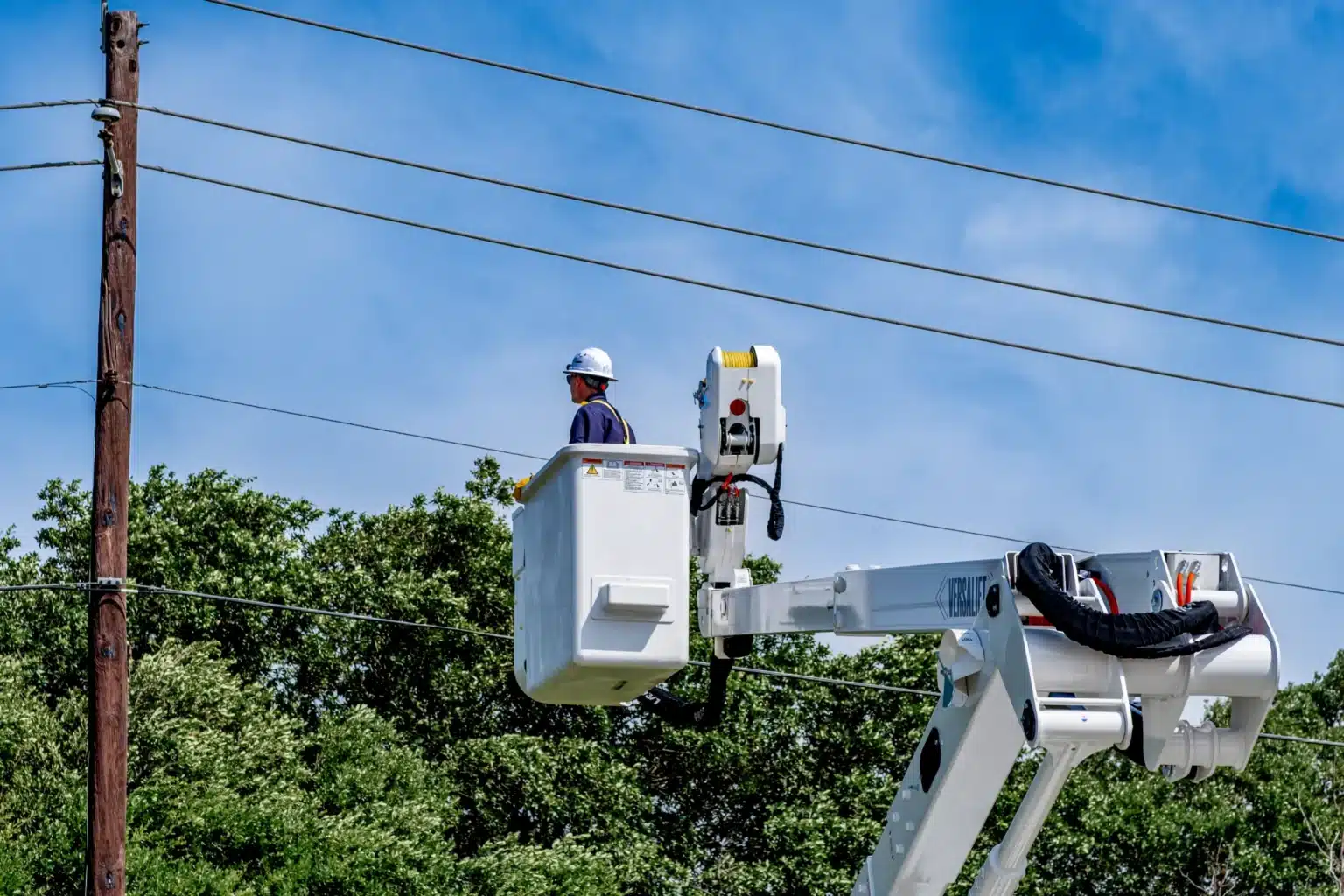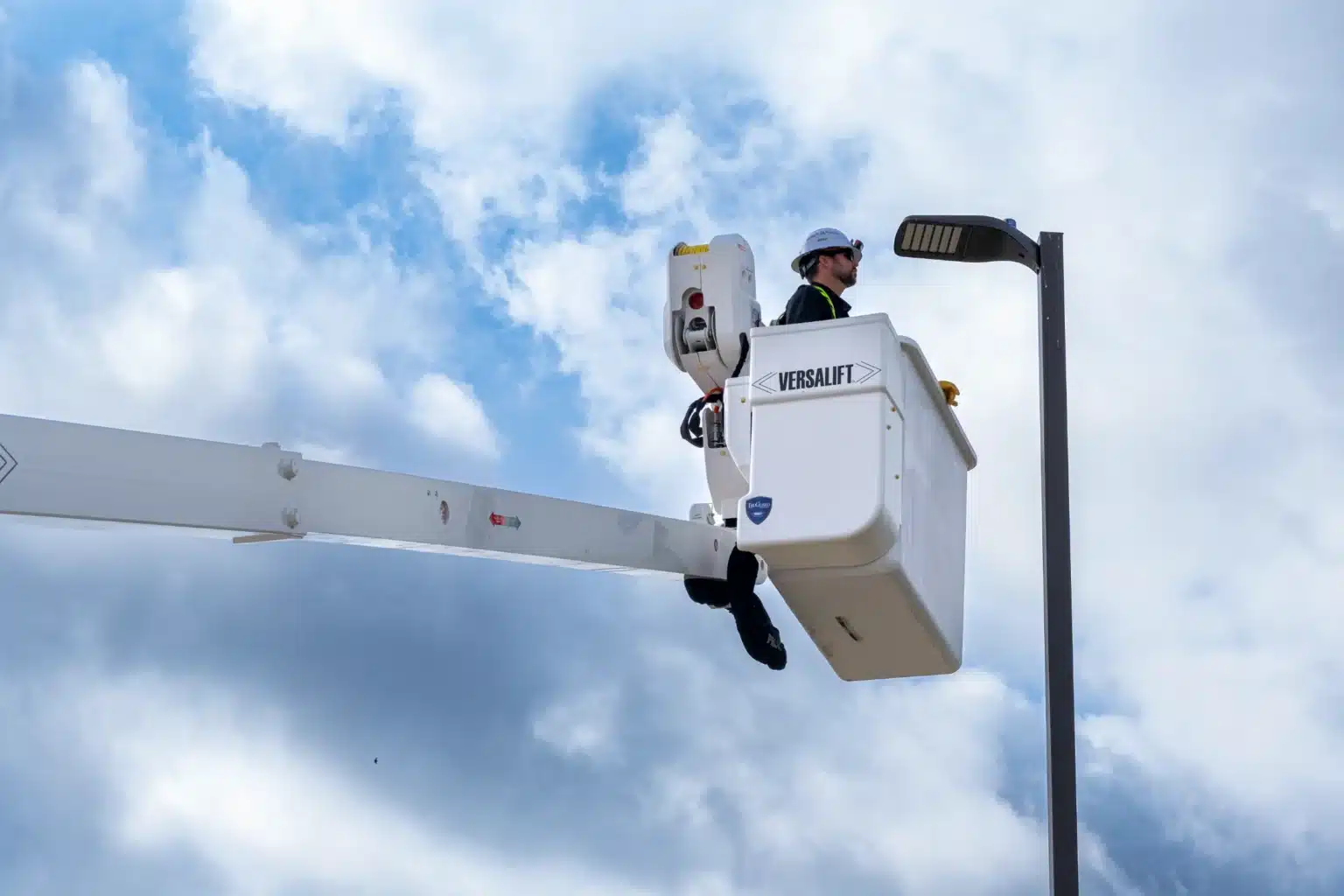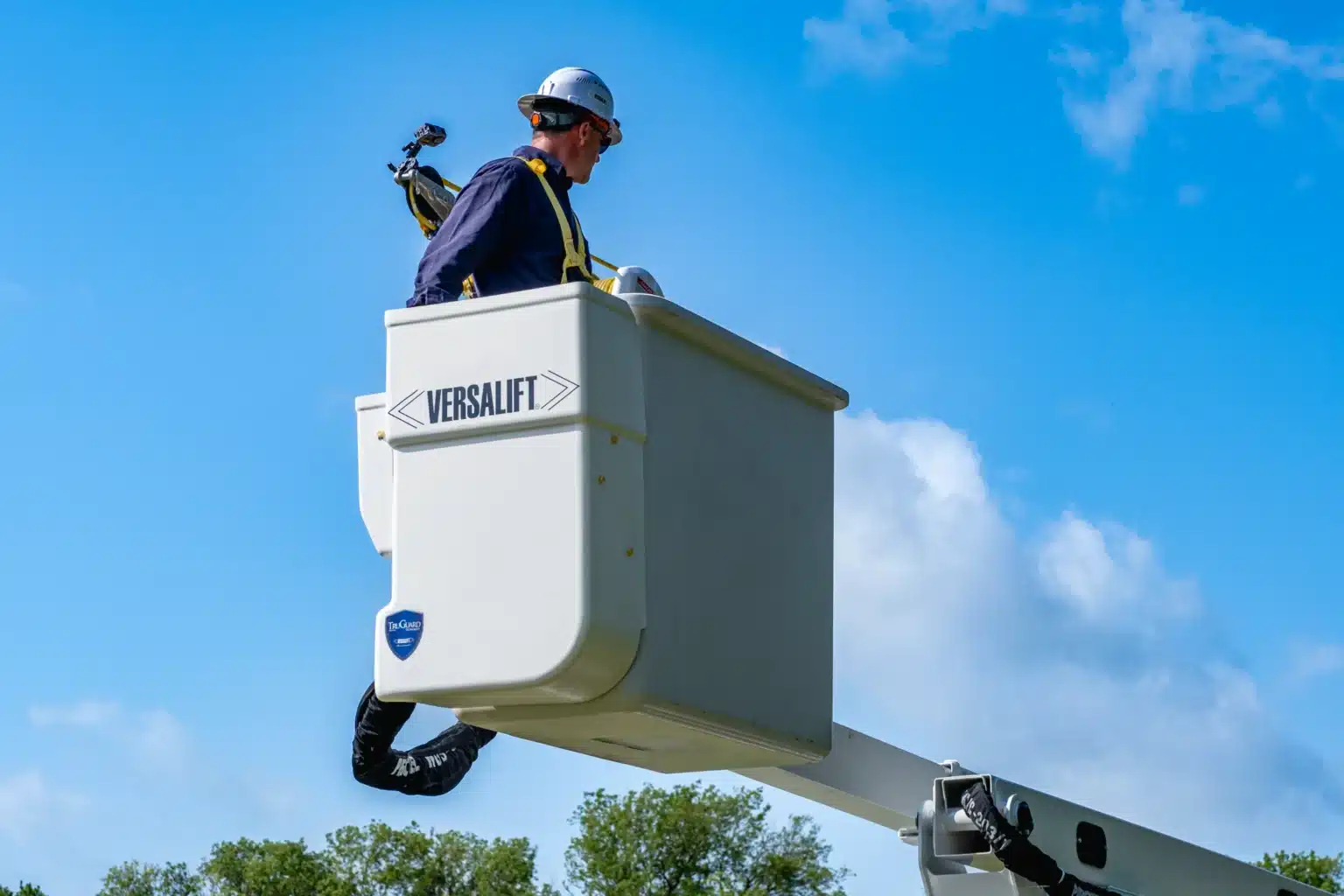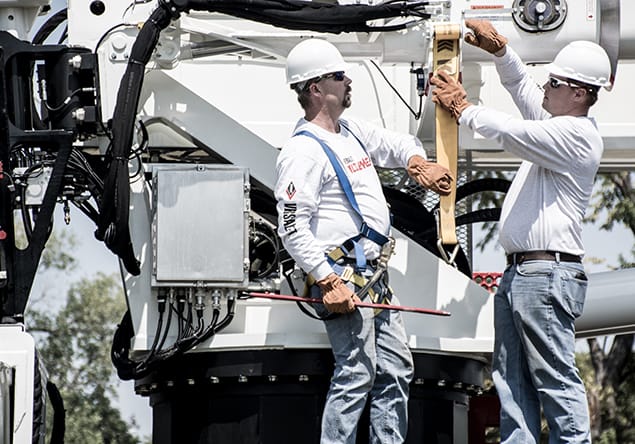Utility trucks are essential equipment across many industries, including electric utilities, telecommunications, construction, municipal services, and more, providing safe access, storage, and tool capabilities tailored to job-specific requirements.
Utility trucks, sometimes referred to as utility vehicles or service trucks, typically include a sturdy chassis, specialized storage compartments, hydraulic systems, and elevating booms or lifts. Their primary purpose is to facilitate efficient access to elevated or difficult-to-reach work areas, transport necessary tools and equipment, and ensure worker safety.
Explore our specialized Utility Truck Solutions for Electric Utilities and discover how Versalift can elevate your operations.

Utility trucks come in a variety of forms, each designed to meet the specific demands of different field applications. Understanding the different types of utility trucks – and how they are used – can help businesses choose the right equipment to improve jobsite efficiency and safety.
Utility trucks are foundational across a wide range of sectors. Each industry has distinct operational challenges, but all benefit from the safety, efficiency, and reliability these vehicles provide. Knowing how utility trucks are deployed in different fields helps highlight their broad utility and the importance of purpose-built configurations.

While utility trucks are configured for different tasks, many share a core set of features that make them essential to modern fieldwork. These components are not only practical – they’re also critical to worker safety and operational efficiency. Understanding what features are available can guide procurement decisions and help optimize jobsite performance.
Read our article about the specialized setups in utility trucks.
The use of utility trucks brings measurable advantages to field operations of all sizes. These vehicles are more than just transport or lift systems; they’re purpose-built workstations that increase speed, consistency, and safety. By choosing the right truck configuration, companies can address a variety of on-site challenges more effectively.
Proper maintenance plays a crucial role in extending the service life and cost efficiency of utility trucks. By following regular inspection schedules and preventive care guidelines, fleet managers can ensure long-term performance, reduce costly repairs, and improve overall safety. Learn more in our detailed guide on how to maintain a utility truck for long-term safety and performance.

Utility trucks must be operated within a regulatory framework designed to protect workers and the public. Ensuring compliance not only reduces liability but also extends the life and effectiveness of the equipment. Understanding these regulations helps teams maintain a proactive approach to safety and maintenance.
Learn more about safety operating utility trucks here.
Not all utility trucks are created equal. Selecting the right model depends on numerous factors including work height, terrain, material handling requirements, and crew size.
Evaluating these elements ensures your team gets the equipment they need to perform at their best. Partnering with an experienced manufacturer like Versalift ensures long-term value and operational fit.
Learn more about what innovations and features to look for in utility trucks.
Utility trucks are vital assets, supporting diverse tasks from utility line maintenance to urban infrastructure upkeep. Versalift provides industry-leading utility trucks designed for reliability, safety, and productivity across sectors.
Contact our expert team today to configure the perfect utility truck solution tailored to your specific needs.
Explore related posts to learn more about Versalift’s products, customer stories, industry updates, and how we support essential infrastructure through innovation and service.
Advanced safety features like TruGuard™ and SlopeMax.
Our QA247 is the foundation of every product we assemble.
Heavyweight Performance – Best in class payloads and lighter chassis options.
We design our products with easy maintenance in mind.

Have questions about our bucket trucks or need help finding the right solution? Fill out the form below, and a member of our team will get back to you shortly.